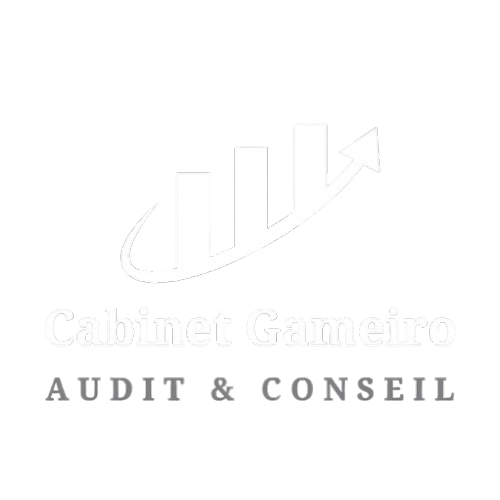Since 2021, the Tax Compliance Examination (ECF) has been a mechanism introduced by the tax administration to help businesses secure their tax situation and reduce the risk of audits. This voluntary process allows you to verify your company’s compliance with tax rules and provides protection in the event of a tax adjustment. What is the Tax Compliance Examination (ECF)? The ECF is a contractual mission carried out by a professional in the field (accountant, statutory auditor, tax lawyer). It is a tax audit that ensures your company is complying with current tax obligations. At the end of this examination, a mission report is sent to the tax administration (DGFIP), certifying that your accounting complies with tax regulations. The 10 Points of the ECF CheckThe examination focuses on 10 strategic points, identified as the most frequently adjusted by the tax administration: Compliance and quality of the General Ledger (FEC) Certification or attestation of the cash register software Compliance with document retention rules Validation of the applicable tax regime (corporate tax, VAT, simplified or actual regime) Determination and tax treatment of depreciation Determination and tax treatment of provisions Determination and tax treatment of accrued expenses Qualification and deductibility of exceptional expenses Compliance with VAT collection and deduction rules Verification of compliance with general tax obligations Why Opt for a Tax Compliance Examination? Choosing the ECF offers several key advantages for your business:✅ Reduced tax risk: An explicit mention on your tax return limits the risk of an audit by the tax administration.✅ Security in the event of a tax adjustment: In the case of a tax audit, no penalties or interest will be applied if an adjustment is made on the points covered by the ECF.✅ Coverage of fees: Fees related to corrected points can be reimbursed by the service provider.✅ Increased trust from partners and investors: A guarantee of compliance that enhances transparency and credibility for your business. When and How to Implement an ECF? The Tax Compliance Examination is usually conducted at the end of the fiscal year. It can be implemented proactively to prevent any tax risks.If you wish to benefit from this process and secure your business, our accounting firm is available to assist you with this mission. Contact us now for a personalized quote!
Month: February 2025
Working Capital (FR) and Working Capital Requirement (BFR)
Working Capital (FR) and Working Capital Requirement (BFR): Keys to Your Company’s Financial Management In the daily management of a company, cash flow control is essential. Two key financial indicators to monitor are Working Capital (FR) and Working Capital Requirement (BFR). These indicators help assess the financial health of your company and anticipate potential liquidity challenges. What is Working Capital (FR)? Working Capital represents the stable resources available after financing fixed assets. These stable resources include share capital, reserves, and long-term loans. Simplified formula:📌 FR = Stable Resources − Fixed Assets Positive FR: The company has a financial cushion to support its ongoing operations. Negative FR: Indicates a potential financial imbalance and may require adjustments. What is Working Capital Requirement (BFR)? BFR measures the cash needed for daily operations. It is influenced by payment terms with customers and suppliers, as well as stock levels. Simplified formula:📌 BFR = Inventory + Accounts Receivable − Accounts Payable Positive BFR: The company requires cash to fund its operations. Negative BFR: The company benefits from longer supplier payment terms than its cash needs, which can generate surplus cash. Relationship Between Working Capital, BFR, and Cash Flow The relationship between these two indicators determines net cash flow: 📌 FR − BFR = Net Cash Flow If FR > BFR: The company has excess cash, allowing it to fund operations without external financing. If FR < BFR: The company faces cash shortages, potentially leading to liquidity constraints. Practical Example Consider a company with: Working Capital (FR): €100,000 Working Capital Requirement (BFR): €70,000 📌 Net Cash Flow = FR − BFR = €100,000 − €70,000 = €30,000 This financial cushion can be used for business expansion or dividend distribution. However, excessive use of this margin may lead to financial losses by the end of the fiscal year. Key Considerations for Managing BFR and Cash Flow 1️⃣ Do not underestimate payment delays Risk: Late payments can disrupt BFR. Advice: Monitor payment terms closely and ensure strict accounts receivable follow-up. 2️⃣ Do not confuse cash surplus with profitability Risk: A positive cash balance does not necessarily mean profitability. Advice: Track both net profit and cash flow simultaneously. 3️⃣ Anticipate seasonality effects Risk: Cash flow needs fluctuate during different periods. Advice: Develop multi-month cash flow forecasts and plan financing during slow periods. 4️⃣ Avoid financing long-term investments with short-term resources Risk: Reducing FR weakens overall cash flow stability. Advice: Use long-term loans or equity to finance fixed assets. 5️⃣ Limit short-term debt Risk: High financial burdens from excessive borrowing. Advice: Balance short- and long-term borrowing while minimizing temporary debts. 6️⃣ Optimize inventory and margin management Risk: Slow-moving inventory and low margins increase BFR. Advice: Improve inventory turnover and maintain strong profit margins. 7️⃣ Monitor financial indicators regularly Risk: Unexpected cash flow issues if not properly tracked. Advice: Implement dashboards and plan financial projections over 6 to 12 months. Conclusion: Constant Monitoring is Key To ensure the long-term success of your company, careful monitoring of Working Capital (FR) and BFR is essential. These indicators must be analyzed alongside cash flow and financial results. As your trusted partner, I am available to conduct a personalized audit of your BFR and cash flow or assist you in implementing tailored financial management tools. 📞 Feel free to contact me to schedule a consultation.
